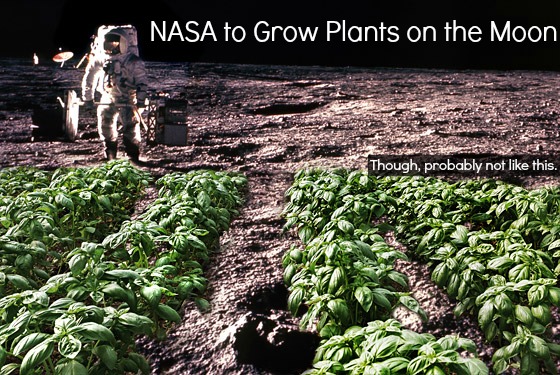

Yes, you read that right, NASA is launching an initiative to grow plants on the moon. This will help to answer the question, “can humans live and work on the moon long term.” I’m not talking about a few days, or even a few years, but can a human live one the lunar surface for decades. Plants are a key step in this plan.
Firstly, plants have genetic material that can be damaged in the harsh environment of space in a similar manner to humans. Watching how plants survive and reproduce over a few generations could start revealing the potential problems of long term exposure to space. The moral of the story is, if we can send plants to the moon, and the plants survive, then we probably can survive too. This will also be some of the first long term tests that study how organisms live in non-Earth gravity.
Furthermore, plants also add psychological comfort, which would be nice for the first batch of Lunar colonists. Building a plant habitat would also help us to improve on and develop technologies that allow living things to thrive in non-Earth environments. It’s important to note that this would be the first life-science experiment conducted on another world, which is incredibly exciting.
The habitat will be a self-contained module that’ll be delivered to the Lunar surface on any NASA or commercial lander. The module will contain Arabidopsis, basil, and turnips seeds. Once on the lunar surface (hopefully in late 2015), water will be added to the lunar module and an identical control on Earth. The growth of the seeds will be monitored for 10 or so days, then the data will be crunched and we’ll send follow up experiments.